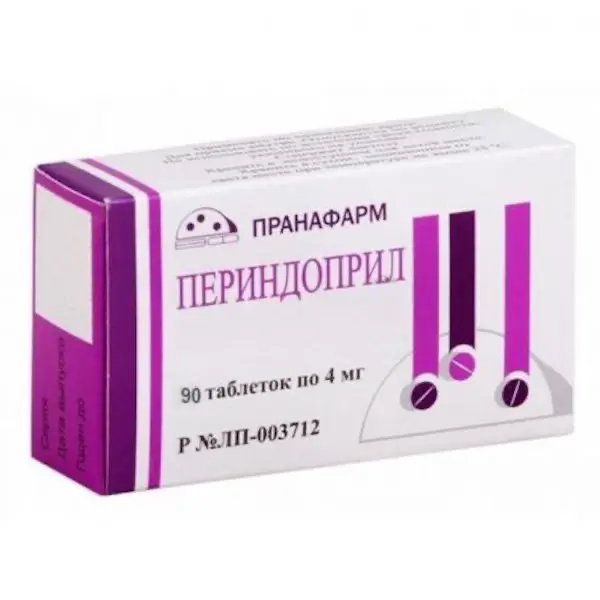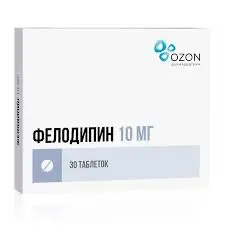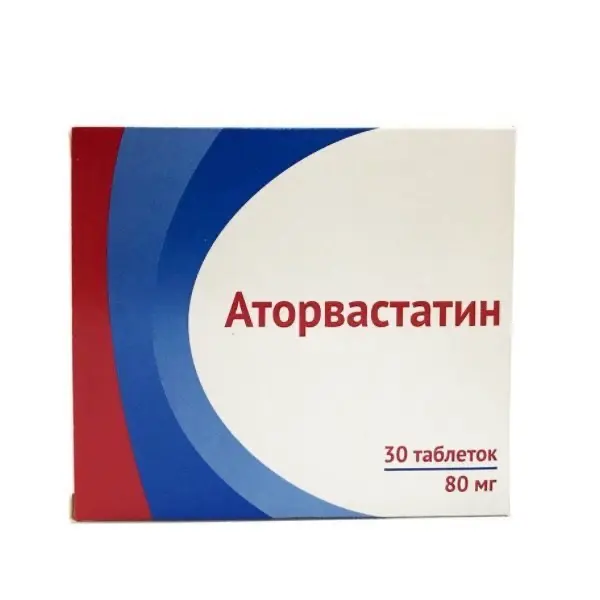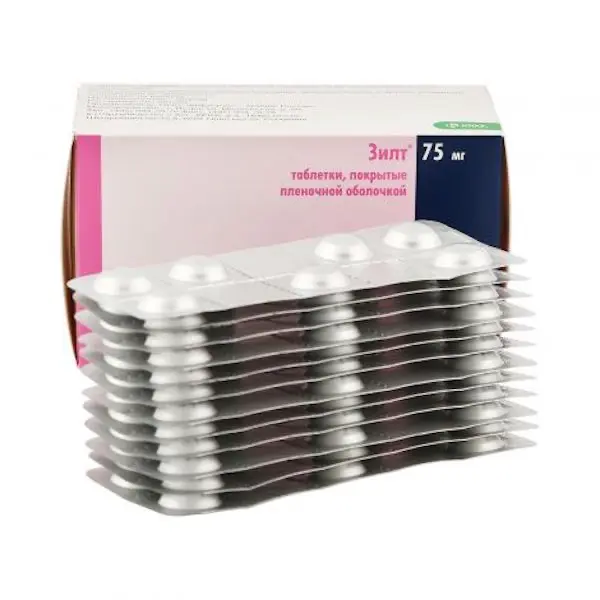Description
Perindopril Pharmacodynamics
Perindopril is an ACE inhibitor. ACE is an exopeptidase, which ensures conversion of angiotensin I into vasoconstrictor angiotensin II, as well as degradation of bradykinin, which has a vasodilator effect, to inactive heptapeptide. ACE suppression leads to a decrease in plasma angiotensin II concentrations, resulting in increased plasma renin activity and decreased aldosterone secretion. Since ACE inactivates bradykinin, ACE suppression is accompanied by an increase in both circulating and tissue kallikrein-kinin system activity, and the prostaglandin system is also activated. It is possible that this effect is part of the mechanism of antihypertensive action of ACE inhibitors, as well as the mechanism of some side effects of these drugs (e.g., cough).
Helps restore the elasticity of large arterial vessels (reducing the formation of excessive amounts of subendothelial collagen), reduces the pressure in the pulmonary capillaries, with long-term administration reduces the severity of left ventricular myocardial hypertrophy and interstitial fibrosis, normalizes the myosin isoenzyme profile; normalizes heart function. Reduces preload and postload (reduces systolic and diastolic blood pressure (BP) in “lying” and “standing” position), filling pressure of the left and right ventricles, reduces total peripheral vascular resistance increases minute blood volume and cardiac index, does not increase heart rate (HR) (in patients with chronic heart failure (CHF) moderately reduces HR), increases regional blood flow in muscles. Increases the concentration of high-density lipoproteins in patients with hyperuricemia reduces the concentration of uric acid. Increases renal blood flow, does not change glomerular filtration rate.
In patients with CHF causes significant reduction of clinical signs of heart failure, increases exercise tolerance (according to bicycle ergometer test), does not significantly reduce BP.
After oral administration of an average single dose, the maximum antihypertensive effect is reached after 4-6 hours and is maintained for 24 hours. Stabilization of antihypertensive effect is observed after 1 month of therapy and persists for a long time.
Indications
– Arterial hypertension (in monotherapy and in combination therapy);
– chronic heart failure;
– stable coronary heart disease (CHD): reduction of the risk of cardiovascular complications in patients with previous myocardial infarction and/or coronary revascularization;
– prevention of recurrent stroke (as part of complex therapy with indapamide) in patients with a history of cerebrovascular disease (stroke or transient cerebral ischemic attack).
Contraindications
Hypersensitivity to perindopril or other ACE inhibitors and to excipients contained in the drug, history of angioedema (Quincke’s edema) associated with the use of ACE inhibitors, hereditary / idiopathic angioedema, pregnancy, breastfeeding, concomitant use with aliskiren and aliskiren-containing drugs in patients with diabetes or impaired renal function (glomerular filtration rate (GFR) < 60 ml/min / 1.73 m2 body surface area) (see age under 18 years (efficacy and safety have not been established), lactose intolerance, lactase deficiency, glucose-galactose malabsorption syndrome (the drug contains lactose).
Dosage and administration
- The drug dose is chosen individually for each patient, depending on the severity of the disease and the individual response to the therapy.
- Orally, preferably in the morning, before meals, the initial dose is 4 mg/day, if necessary (after 1 month) – increase up to 8 mg/day at a time.
- Arterial hypertension.
- Perindopril may be used both in monotherapy and in combination therapy. The recommended initial dose is 4 mg/day.
- In patients with significant activation of renin-angiotensin-aldosterone system (RAAS) (especially with renovascular hypertension, hypovolemia and/or decreased plasma electrolytes, decompensation of chronic heart failure or severe arterial hypertension) a pronounced BP decrease may develop after the first dose of the drug. At the beginning of therapy, such patients should be under close medical supervision. The recommended initial dose for such patients is 2 mg/day.
- If necessary, a month after the start of therapy, the drug dose may be increased to 8 mg/day.
- At the beginning of therapy with Perindopril, symptomatic arterial hypotension may occur. In patients concomitantly receiving diuretics, the risk of arterial hypotension is higher due to possible hypovolemia and decreased plasma electrolytes. Caution should be exercised when using Perindopril in such patients.
- It is recommended, if possible, to stop taking diuretics 2-3 days before the expected start of therapy with Perindopril (see section “Special indications”). If it is impossible to stop diuretics, the initial dose of the drug should be 2 mg. At the same time, renal function and serum potassium content should be monitored. Thereafter, renal function and serum potassium should be controlled. Subsequently, the drug dose may be increased. If necessary, the use of diuretics may be resumed.
- In elderly patients the treatment should be started with dose of 2 mg/day, and further in 1 month after the therapy start the dose can be increased to 4 mg/day, and then to maximum dose – 8 mg/day, taking into account renal function status (see Table 1).
- Chronic heart failure
- The recommended initial dose is 2 mg/day. (in 1 dose). Patients should be under close medical supervision. As a rule, the drug is used in combination with potassium-saving diuretics and/or digoxin and/or beta-adrenoblockers. Subsequently, depending on tolerance and therapeutic response, after 2 weeks after the start of therapy, the drug dose may be increased to 4 mg/day.
- Particular caution should be exercised at the beginning of therapy in patients with severe chronic heart failure of functional class IV according to NYHA classification, as well as in other patients from high-risk group (renal dysfunction and possible development of blood water-electrolyte balance disorders, concomitant therapy with diuretics and/or vasodilators) (see section “Special indications”).
- In patients with high risk of clinically pronounced arterial hypotension (e.g., when taking high doses of diuretics), if possible, hypovolemia and water-electrolyte disorders should be eliminated before starting Perindopril therapy. It is recommended to monitor BP, renal function and serum potassium carefully before and during therapy.





